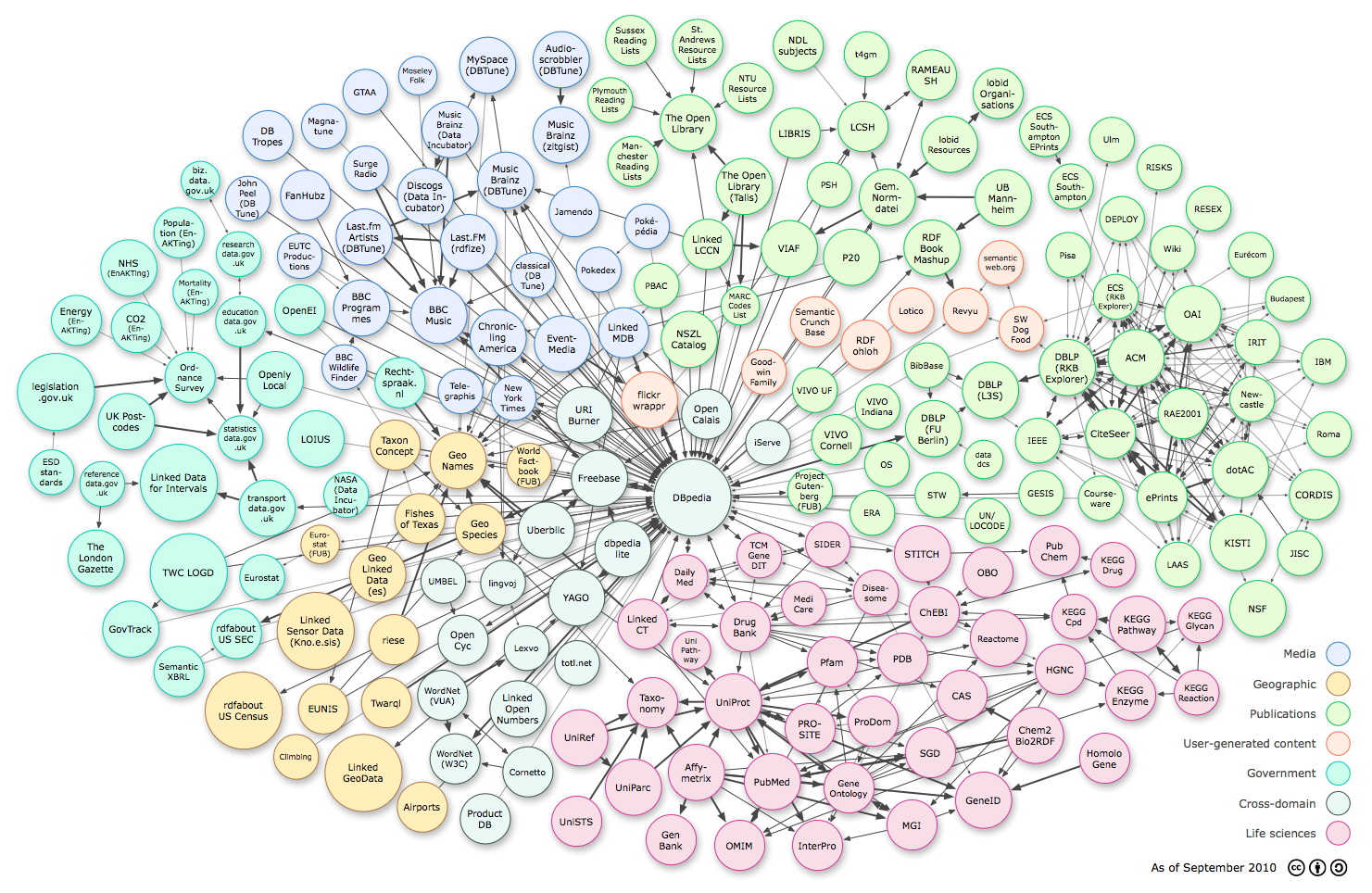 The Linked Data paradigm involves practices to publish, share, and connect data on the Web, and offers a new way of data integration and interoperability. The driving force to implement Linked Data is the RDF technology. The basic principles of the Linked Data paradigm is
The Linked Data paradigm involves practices to publish, share, and connect data on the Web, and offers a new way of data integration and interoperability. The driving force to implement Linked Data is the RDF technology. The basic principles of the Linked Data paradigm is
- use the RDF data model to publish structured data on the Web, and
- use RDF links to interlink data from different data sources.
Linked Data technologies have given rise to the Web of Data. The Web of Data extents current Web to a global data space connecting data from diverse domains. This gives added value for decision support and business intelligence applications, and enables new types of services that operate on top of an unbound, global data space and not on a fixed set of data sources as in Web 2.0 mashups. The Web of Data is impelled by the current trend towards Open Data, i.e., public data which are easily discoverable, accessible, and available to people without any restriction. Linked Open Data (LOD) serve a great cause, enabling transparency, accountability and good governance for public administrations. This is evident from international (e.g., data.gov.uk), and national efforts (e.g., geodata.gov.gr, which was developed by applicant’s research team in IMIS institute). As a side effect, LOD promote sustainable growth and offer a new paradigm for business models and public/private partnerships.
